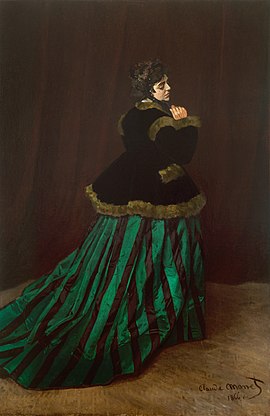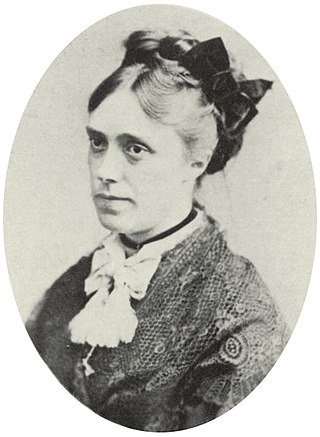
Camille-Léonie Doncieux was the first wife of French painter Claude Monet, with whom she had two sons. She was the subject of a number of paintings by Monet, as well as Pierre-Auguste Renoir and Édouard Manet.

The National Museum of Art of Romania is located in the Royal Palace in Revolution Square, central Bucharest. It features collections of medieval and modern Romanian art, as well as the international collection assembled by the Romanian royal family.

The Neue Pinakothek is an art museum in Munich, Germany. Its focus is European Art of the 18th and 19th centuries, and it is one of the most important museums of art of the nineteenth century in the world.

The Kunsthalle Bremen is an art museum in Bremen, Germany. It is located close to the Bremen Old Town on the "Culture Mile". The Kunsthalle was built in 1849, enlarged in 1902 by architect Eduard Gildemeister, and expanded several more times, most notably in 2011. Since 1977, the building has been designated a Kulturdenkmal on Germany's buildings heritage list.
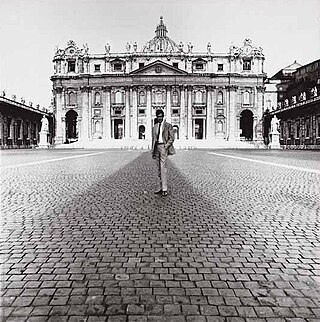
Lothar Wolleh was a well-known German photographer.
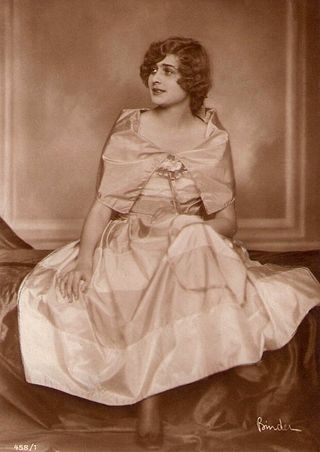
Lee Parry was a German film actress of the silent era. She appeared in more than 40 films between 1919 and 1939.

Women in the Garden is an oil painting begun in 1866 by French artist Claude Monet when he was 26. It is a large work painted en plein air; the size of the canvas necessitated Monet painting its upper half with the canvas lowered into a trench he had dug, so that he could maintain a single point of view for the entire work. The setting is the garden of a property he was renting. His companion and future wife Camille Doncieux posed for the figures. Monet finished the work indoors, and used magazine illustrations to render fashionable clothing.
Xenia Hausner is an Austrian painter and stage designer.

Woman with a Parasol – Madame Monet and Her Son, sometimes known as The Stroll is an oil-on-canvas painting by Claude Monet from 1875. The Impressionist work depicts his wife Camille Monet and their son Jean Monet in the period from 1871 to 1877 while they were living in Argenteuil, capturing a moment on a stroll on a windy summer's day.
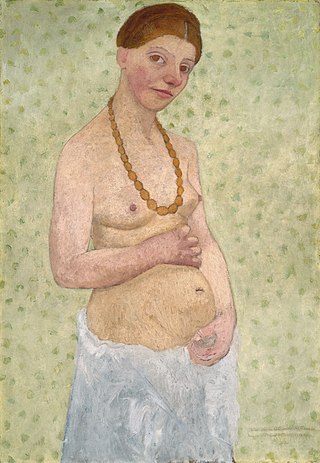
Self-Portrait at 6th Wedding Anniversary, also known as Self-Portrait on the sixth wedding anniversary and Self-Portrait on the sixth anniversary of marriage, is a painting by the German painter Paula Modersohn-Becker, one of the most important early expressionists, from the time of her stay in Paris in 1906.
Mittellateinisches Wörterbuch is a project for the edition of a comprehensive Medieval Latin dictionary, organised by a committee of the Bavarian Academy of Sciences and Humanities and published with C. H. Beck.

Portrait of Père Paul, also known as Monsieur Paul or The Chef, is a painting by Claude Monet.
Otfried Deubner was a German classical archaeologist and diplomat. During World War II, Otfried Deubner worked as a linguist in Pers Z S, the signals intelligence agency of the German Foreign Office.
Meta Antonie "Toni" Elster was a German painter. Her focus was on landscapes, and she painted many "harbour" paintings. As a young woman she traveled extensively, but the paintings for which she is chiefly remembered mostly show the north German flatlands of her home region.
Johann Büsen is a German visual artist.

Death and the Child is a composition created by Edvard Munch in 1889. Since 1918 it is located in the Kunsthalle Bremen. It depicts a little girl at her mother’s deathbed who is looking at the viewer in a fearful manner. A second, thus far unknown painting of the artist was discovered underneath the canvas in 2005. A new version of that motif, which refers to Munch’s family and the early death of his mother was created between 1897 and 1899 and is now hanging in the Munch Museum in Oslo. An etching was made in 1901 with this motif.

Butcher Store in Schäftlarn on the Isar is a painting by the German painter Lovis Corinth from 1897. The picture shows a scene from the store of a slaughterhouse in Schäftlarn near Munich. It is held in the Kunsthalle Bremen.
Julius Bernhard Stern was a German Jewish banker, art collector and philanthropist.
Kirsten John-Stucke is a German historian, non-fiction author, and museum director of the Wewelsburg Museum. She is the editor of numerous documentations on the history of Wewelsburg during the National Socialist era and on the history of the Niederhagen concentration camp. The focus of her work lies in commemorative culture, educational memorial work, and in the re-conception of the Wewelsburg Memorial and Museum from 1933 to 1945.
